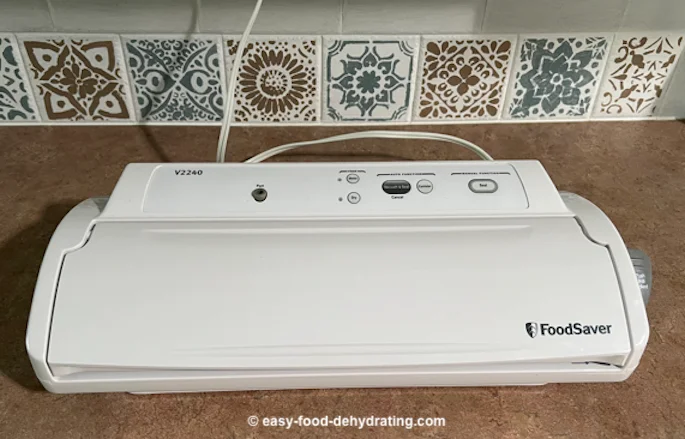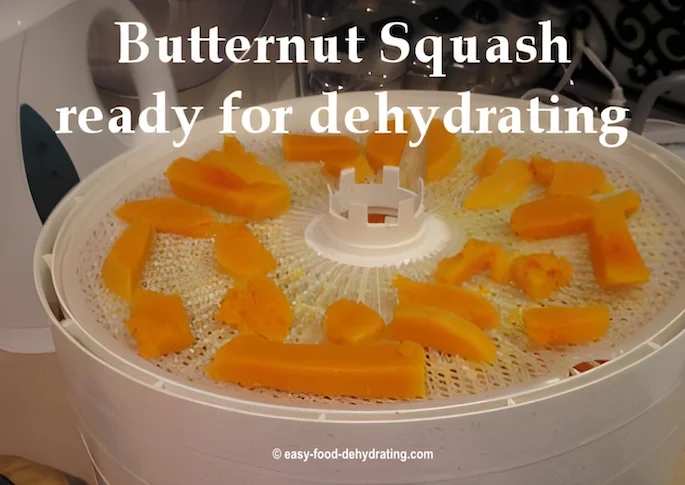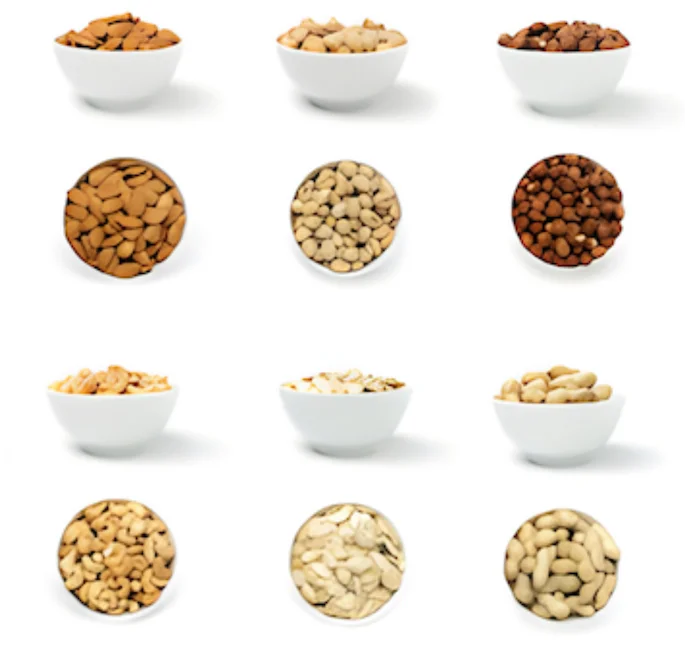- Home
- Articles On How To Dehydrate Food Safely
- Why Dehydrate Food? Keep A Full Pantry For Emergencies
Why Dehydrate Food?

Susan Gast | Author, Blogger at Easy Food Dehydrating, Beesville Books, and A New Sober You
Welcome to "Why dehydrate food," and it's a good question. If you're considering this food-preservation method, keep reading!
 Courtesy of Camtasia - Registered User
Courtesy of Camtasia - Registered UserBIG Question: "Why dehydrate food?"
BEST Answer: So you have emergency food on hand when the grocery stores have run out.
Or when another pandemic like Covid-19 hits and/or its variants. Months and years after Covid-19 up-ended us all, supply chains (around the world) still face issues in the transportation of goods.
Dehydrating, Freezing, or Canning?
But why dehydrate food over freezing, or canning, you ask? It's the time factor along with three important reasons why dehydration works better.
In order to store food properly for long-term storage, you need to keep three things at bay:
- Air
- Light
- Water
When those three things are addressed, the likelihood of retaining a stock of food for the long-term is greatly increased.
Plus, dehydrated food won't go off anywhere near as fast as fresh food does, and dried food doesn't take up as much room as fresh foods. So there. (Sticking tongue out). Not.
But What If I Want to Freeze Foods?
What's wrong with freezing food? Well, not only do you have to have electricity to keep the foods frozen, but you also need mass amounts of freezer storage space. AND what happens when the power goes out?
You can't run one of those noisy generators forever. And more often than not, those packaged frozen meals get 'freezer burn' - a nasty case of air converting to ice. This brings me to:
Point 1: Air...
When dehydrating foods, we remove the air using a food vacuum sealer. Point 1 'done.'
Point 2: Light...
Keeping foods away from direct light also prolongs their shelf-life. Storing our dehydrated food in Mylar bags takes care of Point 2.
Point 3: Water...
When you freeze foods, the water content is in the food, and
you need electricity to keep the food frozen. Dehydrate food and that's Point 3 addressed.
When we dehydrate food, we're taking the water out. And to make sure your foods stay as dry as possible, we add oxygen absorbers to the vacuum-sealed bags. Yep: Point 3 TRIPLE-nailed!
Download our FREE eBook: Six Simple Steps
To better understand why we dehydrate food and the food dehydration process itself, download my free Six Simple Steps eBook today - simply click the link or the image.
The free eBook covers the necessary steps to safely dehydrate fruit, vegetables, and (cooked) meats!
And while you're downloading the Six Simple Steps, also treat yourself to our "How to Grow & Dehydrate Herbs" too! Click here to visit the free Herb Book page.
It's a "thank you" gift for visiting this Easy Food Dehydrating website and trusting me with your email addy!
Save Money on Electric Bills by Dehydrating Foods
A great way to save cash is by dehydrating fruit, vegetables, and meats. Fact: If you dehydrate your fresh foods, you do not have to store it in the refrigerator for days and weeks at a time.
When the foods have been dehydrated, they can last for months—even years without electricity—and that's a great energy-saving cost right there.
Dehydrating is Affordable and Easy to Do
Another reason why you should dehydrate food is that it's affordable and very easy to get started at home. Simply visit our dehydrator page and/or check out Gregg's dehydrator reviews online and choose which dehydrator suits your home situation best.
If you are a large family, choose a dehydrator with the capacity to have nine trays dehydrating all at once (or more!)
But for just the two of you? Maybe a simple starter four-tray dehydrator is sufficient.
There are many brands of dehydrators—some have stackable trays
and some have trays that pull out like a chest of drawers. I have one of
each type of dehydrator. Not bragging, just sayin'... :-)
I have not found one to be better than the other, but I have found unique purposes for both. I have a Nesco dehydrator and an Excalibur dehydrator.
The pull-out Excalibur dehydrator trays lets the dehydrator to be used for proofing bread dough by simply
leaving the bottom tray in and omitting the trays above
it to make room. The Nesco adapts by stacking four trays to as many as you want (within reason folks).
Why Dehydrate Food?
It's Ideal For Long-Term Storage
Stackable Benefits
The benefit of a stackable dehydrator is that when you only need to use four trays you can - instead of having to use six static trays (of an Excalibur-type dehydrator with pull-out trays).
You can do that without the nagging thought of those empty trays wasting space and expensive electricity!
Next Step: Drawing Out the Air!

The next step is to get a vacuum sealer machine. Its purpose is twofold:
- Draw the air out of the bag
- Seal the vacuumed bag
You could call it a day right there - or go one step further.
Mylar bags help further protect our vacuum-sealed dehydrated food packages.
 Mylar Bags Keep Out Light, Moisture, Air
Mylar Bags Keep Out Light, Moisture, AirThese space-age bags are made of shiny non-tearable material.
The use of Mylar bags addresses the three points mentioned at the top of the page: light, moisture, air, and yes, bugs—depending on where you intend to store them, i.e. the garage, for instance.
The Mylar bags are also sealed, but there is no need to vacuum them.
Simply use a Sharpie pen to write the contents on the bag and date it Bear in mind, when labeling the bag, the best area to note the date and contents is towards the bottom. Why?
You'll be cutting off the top to take out a pack or two, resealing it, and then you'll be rewriting what's in it all over again! (Ask me how I know...)
Dehydrate Food for Overall Space Savings Too!
A different kind of savings can be achieved in the way of space saving, not just money-saving!
Eight whole bunches of celery can be stored in just one single-quart Mason jar! Can you believe that? And it takes no electricity—great energy savings—and no fridge space to store it either!
Thanks for reading...
Don't forget to grab your free Six Simple Steps eBook! It’s packed with tips for dehydrating everything from fruits and veggies to dog treats. Get it here.
Before You Go...
If you like the content, please give me some love by clicking on the 🩷 in the lower right hand corner (on just about all my pages). This signals to me that you find it enjoyable and useful. Thank you so much!













